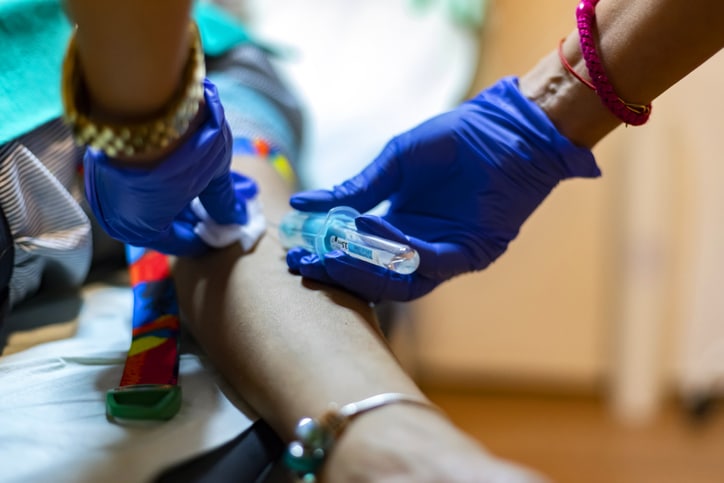Category: Medical Lab Technician Assistant
Safety Precautions Graduates of Medical Lab Technician Training Can Take During COVID-19
July 03, 2020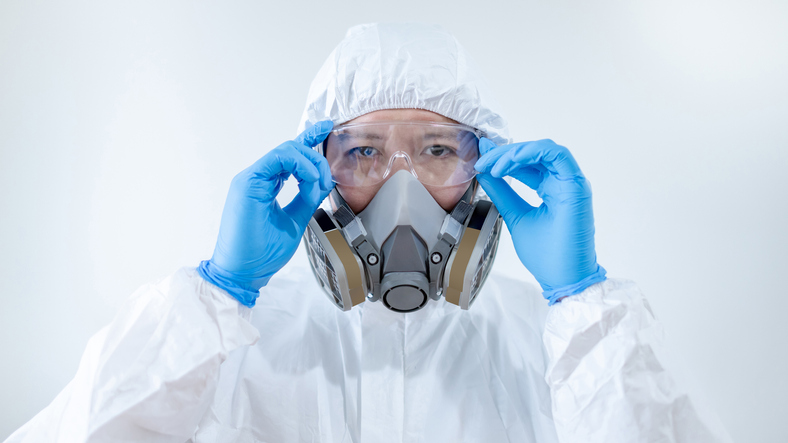 The ongoing COVID-19 pandemic has necessitated greater precautions to be taken by various industries to keep employees safe. In particular, professionals working in medical laboratories have had to adopt unique protocols of their own.
The ongoing COVID-19 pandemic has necessitated greater precautions to be taken by various industries to keep employees safe. In particular, professionals working in medical laboratories have had to adopt unique protocols of their own.
Since clinical laboratory personnel typically find themselves close to their colleagues, social distancing becomes extremely difficult to practice. This is compounded by the fact that this type of work involves being in contact with high-touch materials and surfaces, and also cannot easily be done remotely.
Given the unprecedented nature of the COVID-19 pandemic, it’s important that any medical lab technician go about their job as safely as possible to avoid infection to themselves or others. Here are some safety precautions that can be taken by medical lab tech graduates during the pandemic.
Labs Should Be Inspected, Cleaned, and Disinfected Regularly
Although cleaning and inspecting labs is a common practice, it’s highly recommended that lab professionals do these routine cleaning practices more often in light of the pandemic. Make sure all areas of the lab — especially ones that are frequently touched — are thoroughly cleaned and then disinfected at least twice daily.
Examples of high-touch surfaces include handrails, counters, and door handles. Beyond this, you can also put tape on the floor to establish physical distancing in the lab, as well as making sure you and all colleagues are wearing personal protective equipment (PPE) at all times on the job.
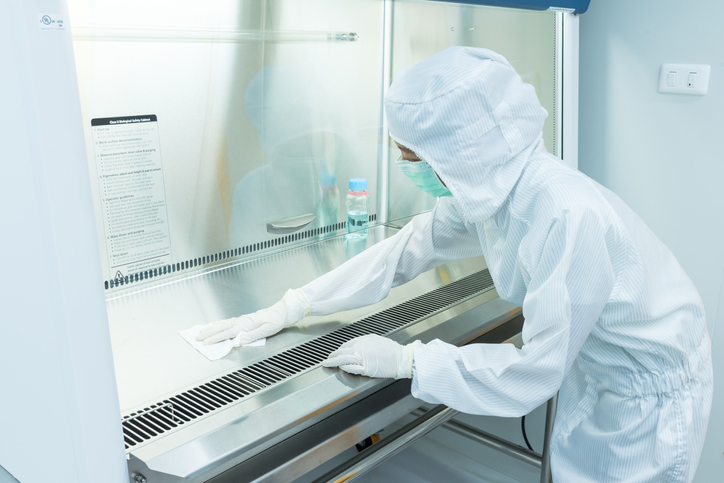
Graduates of Medical Lab Technician Training Should Also Practice Good Hygiene
This shouldn’t need to be explained, but it bears repeating. Any graduate of a medical laboratory technician program who is employed in a lab should:
- Wash their hands frequently
- Avoid touching their face without washing their hands first
- Stay home if they are exhibiting symptoms
- Avoid contact with others who are showing symptoms or have been in contact with suspected or confirmed cases
Furthermore, despite the confined spaces of medical labs, try your best to practice physical distancing by staying a minimum of two metres apart from your colleagues, if possible. If you feel sick, inform your supervisor as soon as you begin showing symptoms. Following rules related to hygiene and distancing is key to getting through this type of work during the pandemic, for you and all others involved.
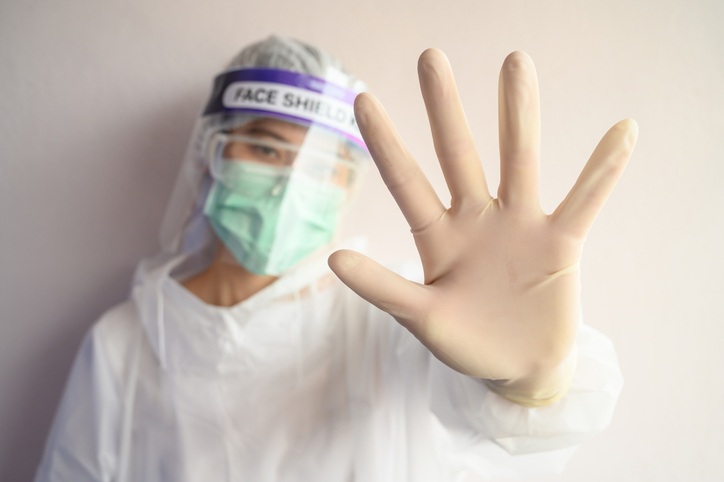
The Laboratory Must Be Prepared Accordingly
Although practicing proper preparation is a good habit for students completing their medical lab technician training to pick up at any time, it’s especially pertinent to our current circumstances.
With this in mind, any lab that is short-staffed or lacking certain resources must take certain precautions. For example, do not perform any potentially risky procedures while alone in the lab without first informing supervisors and colleagues.
Additionally, lab professionals should not perform tests that generate aerosol if the lab does not have the correct infrastructure or protocols in place for them. Lastly, make an effort to ensure there is a sufficient supply of N95 masks and other forms of PPE in the lab, especially since orders for supplies of any kind can be delayed during the pandemic.
Want to take medical lab tech courses?
Contact Medix College to find out more!
Healthcare Heroes: 3 Ways that Professionals with Medical Lab Tech Training Are Responding to COVID-19
June 22, 2020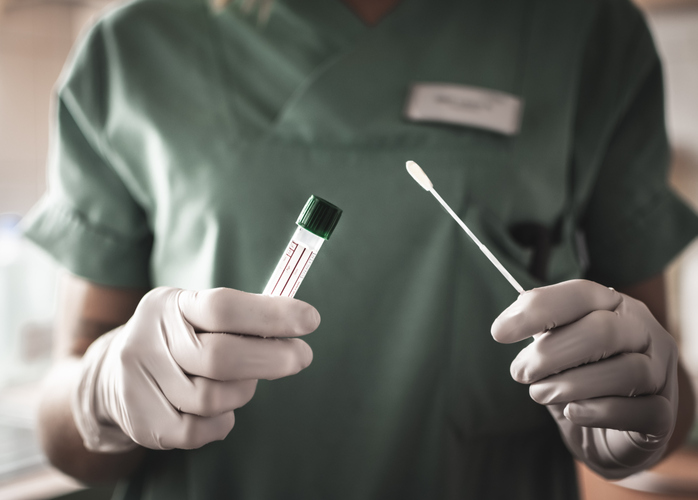 Since the outbreak of COVID-19, medical laboratories around the world have had to adapt to stop the spread of this highly infectious virus. In Canada, medical laboratories are conducting thousands of coronavirus tests every day. Laboratories are even investing in additional staff and equipment to increase capacity and speed up the testing process.
Since the outbreak of COVID-19, medical laboratories around the world have had to adapt to stop the spread of this highly infectious virus. In Canada, medical laboratories are conducting thousands of coronavirus tests every day. Laboratories are even investing in additional staff and equipment to increase capacity and speed up the testing process.
As part of a medical lab technician course, you will learn how to collect a sample and conduct routine lab tests and analyses, meaning you could play a crucial part in the fight against COVID-19 in the future.
Read on to find out three ways that medical lab technicians are tackling the global pandemic.
Hiring New Staff Members with Medical Lab Tech Training to Meet Increased Demands
COVID-19 has put increased pressure on almost all healthcare facilities. Hospitals, clinics, research facilities, and medical laboratories are all in need of additional trained healthcare workers to manage the increase in demand. Laboratories are hiring new staff, and some are even bringing back retired workers.
“Our workload has increased dramatically, requiring the team to work especially hard,” said one manager at McGill University Health Centre. “In an effort to meet the ever-increasing demand, the laboratory is in the process of hiring extra help, including retired laboratory techs.”
The process of testing for COVID-19 can be labour-intensive and take several hours. It may take a lab 24 hours to actually run the test and then several days to deliver the results. After medical lab tech training, you could help them to meet this challenge.
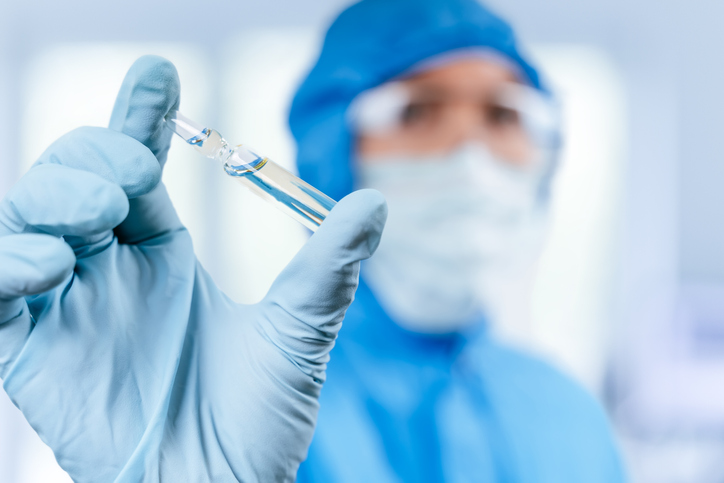
Technicians Are Working Extra Hours
In order to cope with the increased demand and conduct more tests, medical lab technicians are taking on additional shifts and working extra hours. Their hard work and dedication is helping to save the lives of many.
COVID-19 has also demonstrated the importance of medical lab workers. They are essential to detecting and preventing the spread of infectious viruses like COVID-19. In addition, the World Health Organization (WHO) has emphasized the importance of testing, as it is one of the only ways to contain the virus without a vaccine.
Medical Lab Technicians are Wearing Protective Personal Equipment (PPE)
Graduates of medical lab tech courses may need to have direct contact with coronavirus patients when collecting samples. The test is normally conducted by inserting a swab into the cavity between the nose and the mouth. This sample is then tested for COVID-19.
This means that medical lab technicians are on the front lines, risking their own lives to slow the spread of the virus. In order to protect themselves and others when collecting and testing samples, technicians need to make sure that they wear all the appropriate personal protective equipment (PPE). This includes gloves, medical gowns, eye masks, and face masks.
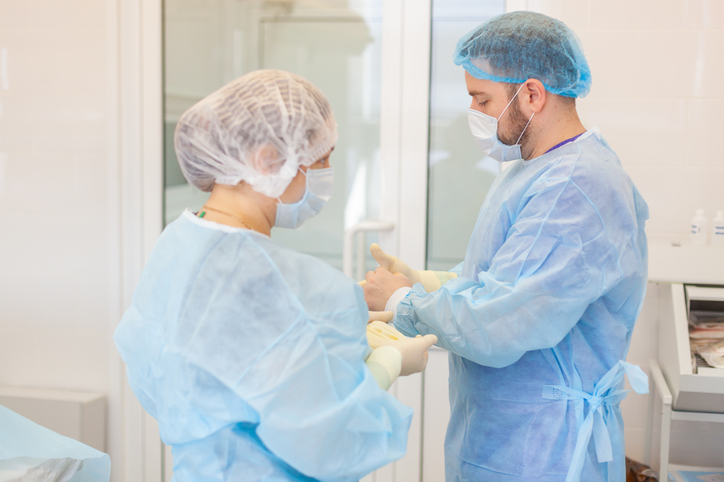
Do you want to find out more about medical lab technician school?
Contact Medix College today!
Why You Need to Learn About Cytology in Medical Lab Tech Training
February 20, 2020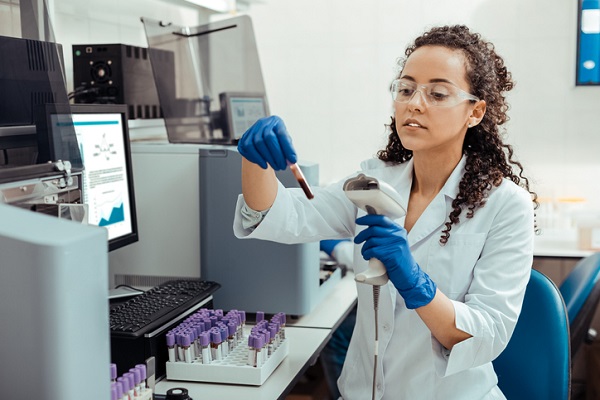
If you’re interested in a career as a medical laboratory technician, you will need to have an understanding of cytology. In simple terms, cytology is the study of cells. It can be used to diagnose an individual with a particular disease or condition.
The most well-known example of cytology is the smear test, sometimes referred to as the Pap test. This involves taking cells from the cervix and examining them for cervical cancer.
As a medical laboratory technician, you will be responsible for collecting blood, tissue or cell samples from patients for tests like this, and understanding the underlying principles behind your work is a must.
Read on to find out why cytology is an important part of medical lab training.
Learn About the Benefits of Cytology in Medical Lab Tech Courses
While studying at medical laboratory technician school, you will not only learn how cytology works, but you will also learn about its advantages.
Cytology has many benefits over traditional tissue samples. Firstly, cytology is a safe method of diagnosis. It’s less invasive than taking tissue samples and the patient is unlikely to experience any discomfort. There is a low chance of complications because the procedure is so simple and the patient is unlikely to need anesthetic.
Secondly, it’s possible to obtain a cell sample for cytology and to see the results quite quickly. Medical professionals can view the samples and provide a primary diagnosis almost instantly. This is very important when diagnosing early stages of cancer.
Thirdly, cytology is cost-effective. This is because the procedure is simple and quick, and requires minimal equipment.
Lastly, cytology provides very accurate results. The introduction of the smear test in the 1960s led to a dramatic drop in the rate of death from cervical cancer.
Different Types of Cytology
There are two main branches of cytology that you will encounter as part of your medical lab tech training: exfoliative and aspiration.
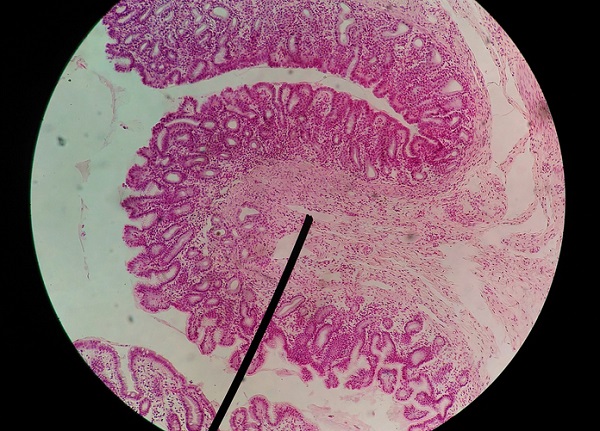
Exfoliative cytology involves samples that have been collected from the body’s surface. This includes bodily fluids like blood or urine that have already left the body, or skin samples that have been scraped off.The Pap smear test is an example of exfoliative cytology.
Samples in aspiration cytology are taken from the body using a syringe. This is sometimes referred to as fine needle aspiration (FNA).
Diagnosing Samples from Patients
Once the medical lab technician has got the sample, the next step is examination and diagnosis. The cells are smeared on a glass slide, stained, and placed under a microscope. This is where the smear test gets its name!
A doctor would examine the cells to look for any abnormalities. This can be used to spot early signs of cancer.
Are you interested in kickstarting your career with medical lab tech courses?
Contact Medix College for more information!
What Students in Medical Lab Tech Courses Should Know About Histology
December 30, 2019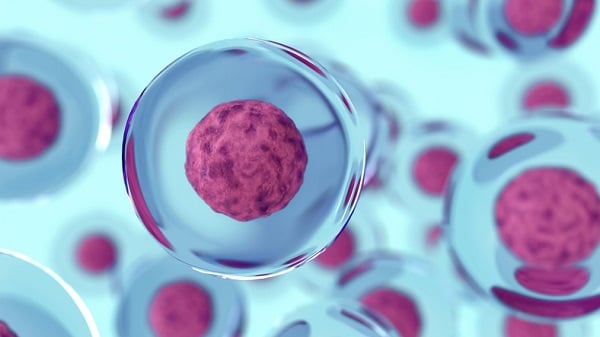
Histology studies the microanatomy of body tissues and cells. In this discipline, the structure and function of cells, organs, and more are examined using microscopes. Your courses at Medix College will include theory that covers histology, so that you have an understanding of how people learn more about these important parts of the human body.
When you understand cell and tissue structure, it gives you a solid background of knowledge to apply to your career when collecting samples from patients and logging them, as well as providing patient reception and documentation, among other tasks. Read on to learn more about histology if you’re pursuing a medical lab tech career!
Understanding How Histology Applies to Medical Lab Tech Courses
As you likely already know, medical lab techs can work in veterinary labs, hospitals, clinics, research facilities and more. There is a large opportunity for variety between positions, and the tasks expected of you will vary depending on the environment you are in. In your career you will deal with samples of bodily fluids and tissues.
When you have a strong understanding of how the human body functions and how it is affected by pathologies, you will be able to use this knowledge in the proper handling and processing of samples. You’ll want to understand histology if you’re in a medical laboratory technician program to see the importance of gathering high-quality samples for pathologists to inspect.
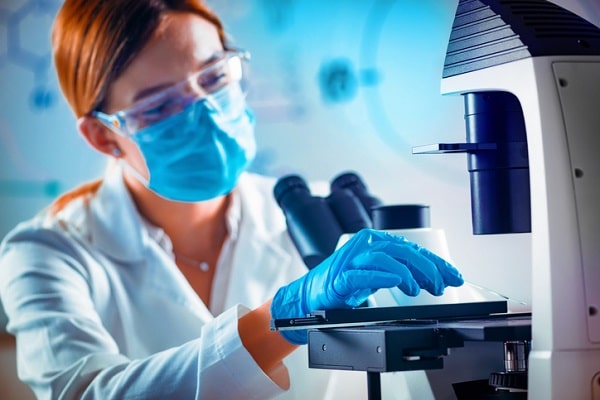
Tissue Processing in a Medical Laboratory Technician Program
Tissue processing is taught in your classes because it is a necessary step between obtaining tissues for diagnosis or inspection, and producing microscopic slides for pathologists to view and analyze. It’s important to understand the entire process of which you are a part of in a medical lab tech career, so that you can perform in the most informed way possible.
When pathologists need to look at the microanatomy of cells, they use very thin, extremely high-quality slivers of the tissue and mount them on slides. To prevent damage to the sample in this stage, tissue processing prepares the tissue to be cut without being rendered unusable. This process can be very difficult and once a slice is obtained, it will need to be stained on the slide so that the correct information can be visible for analysis, such as abnormalities in cells.
Who Else Learns About Histology, Besides Those in Medical Lab Tech Courses?
Your program isn’t the only place where students are given a background in histology to help in their careers. Medical laboratory technician school is a great place to build thorough knowledge so that your questions are answered. You may be interested to learn that this is also taught to those pursuing careers in archaeology, because they use histology when recovering matter from excavation sites. For example, bones and teeth are often great ways to learn information, as they are biological material.
Histology is also a great way to connect anatomy and physiology, for students in various healthcare disciplines. When you understand what happens at a cellular level, you are better at understanding the big picture of how the human body is built and works. Forensics students also learn about histology, to understand how tissues are examined in their careers.
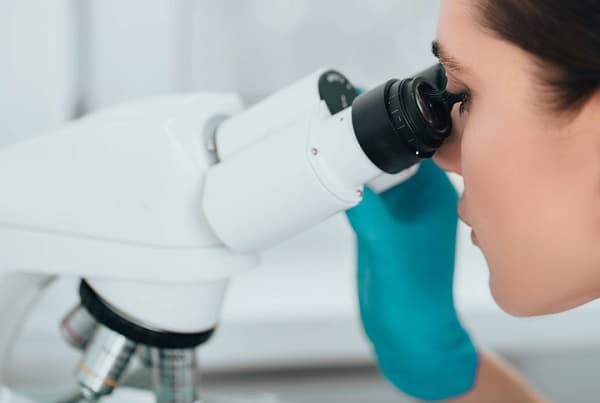
Are you interested in medical lab tech courses?
Contact Medix to learn more.
4 Ways Your Medical Lab Tech Training Can Help You Prepare for a Job Interview
November 19, 2019
Landing a job interview is exciting and acing it can dramatically increase your odds of being offered a position. To do that, you need to impress your interviewer. This requires professional attire, listening skills and a thorough understanding of the position, the responsibilities it entails, and of the facility to which you have applied.
After your medical lab technician training, you will have the opportunity to work in medical laboratories, hospitals, clinics, research facilities and other organizations. For all of your prospective workplaces and positions it is important to know how to handle yourself in the interview. Here are a few ways your laboratory training will ensure that you know how to ace the interview.
1. Practice Communication Skills
One of the most common interview questions is simply “Tell me about yourself.” This is a chance for the interviewer to get to know you, which is why the way you communicate both verbally and non-verbally is so important when answering. Luckily, there is a medical lab technician course that covers communication and you will have practiced communication skills with your classmates so you will be ready for this question and more. In addition, this course will teach you how to control the way you think in order to achieve success. By building up your self-confidence in this way, your training can help you more effectively convey to interviewers who you are.

2. Develop Study Skills in Medical Lab Tech Courses
During the interview you will almost certainly be asked about your technical skills. Your classroom experiences are proof that you have the right skills and qualities to excel in any lab position. For example, you can discuss how you learned about phlebotomy, specimen procurement, reagent preparation, clinical chemistry, and more in your courses. The way you studied for exams for medical lab tech courses is similar to how you will prepare for an interview. You have to learn about the company and the position so that you can then highlight the skills and experiences you have that are the most relevant.
3. Get Experience with Equipment
You may also be asked about your experience with different types of equipment. Again, you will want to tailor your answer to the specific position and organization, but you can be sure that your training will have exposed you to all kinds of procedures and equipment. For example, you may wish to highlight your experience with laboratory math and analytical quality assurance procedures as well as specific instances of how you applied this knowledge in the lab.
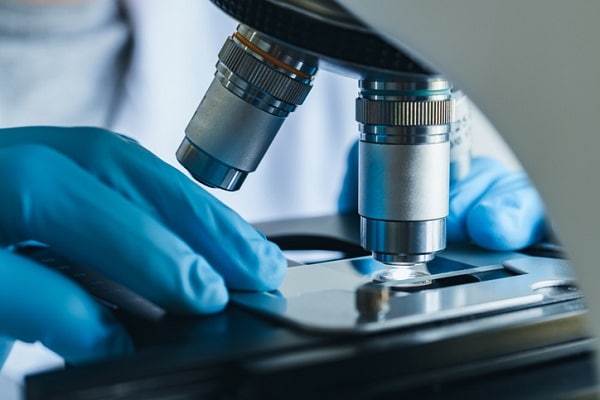
4. Real-World and Detail-Oriented Knowledge
Some questions might be highly specific, such as “What are different techniques for placing samples in a microscope?” or “What are different sterilization methods?” You will be prepared for specific questions because you will have had actual lab experience. Beyond the classroom labs, part of training to become a lab technician or assistant is a field placement. By the time you go for an interview you will have already worked under a lab technologist and will be familiar with the routines, responsibilities and other daily activities of at least one lab. This experience is a chance for you to demonstrate that you can work in a consistent and detail-oriented way as you did in your field placement and in the classroom.
Interested in learning more about medical lab technician training?
Contact Medix College to get started.
What Students in Medical Lab Technician Training Should Know about the Anatomy and Physiology of Blood
August 16, 2019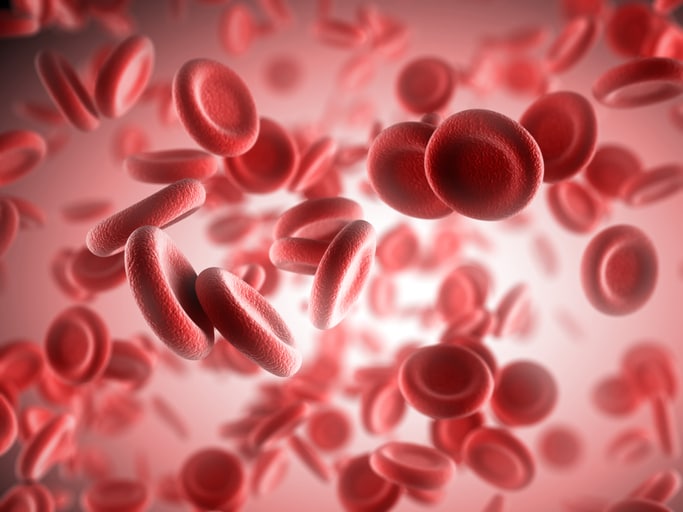
Blood is thicker than water—literally and figuratively. It also does a lot for our bodies. Blood gives us oxygen, nutrients, helps fight infection and illness, and helps remove waste. Additionally, blood helps our organs function and the body regulate pH levels and body temperature. In other words, blood is one of the human body’s most vital components.
We’re all aware of how important blood is to our everyday functioning, but you may have never actually thought about how blood works. Since blood testing is a major part of studying to become a medical lab technician, here are a few things you need to know about the anatomy and physiology of blood.
Blood Comes Together Through Four Types of Blood Cells
The average human has more than five litres of blood in their system, which makes up around eight per cent of our body weight. Blood cells also comprise half of blood’s overall volume, and blood is made of four major components: red blood cells, white blood cells, platelets, and plasma.
Red blood cells (aka erythrocytes) bring nutrients and oxygen to tissues, and make up 45 per cent of blood’s total contents. White blood cells (leukocytes) and platelets (thrombocytes) only make up less than two per cent of blood, but they still play important roles. The former is the immune system’s cells, and are used to fight infections, while the latter are cells that form clots to help wounds heal. Plasma is the yellow fluid component of the blood, comprising more than half of its volume. It contains numerous proteins and nutrients, as well as glucose, hormones, water, waste, and gases.
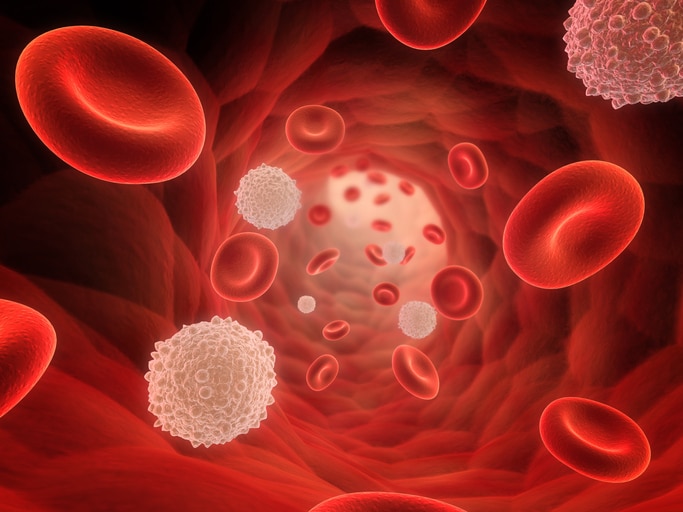
Red and white blood cells are only two components of what helps makes up blood volume
Plasma is Also Divided into Three Different Categories of Proteins
Although 92 per cent of plasma is comprised of water, almost all of the remaining eight per cent is made of three classes of proteins. Students in a medical laboratory technician program may be interested to know that the most prominent of these is albumin, which draws water from tissue and brings it into the bloodstream, helping maintain the regulation and balance of osmosis.
Second to this are globulins, which are molecules that transport substances throughout the blood stream, respond to foreign agents like viruses and bacteria, and inhibit enzymes. Lastly, the least prominent of these proteins is fibrinogen, a protein produced by the liver which helps to form blood clots and heal wounds.
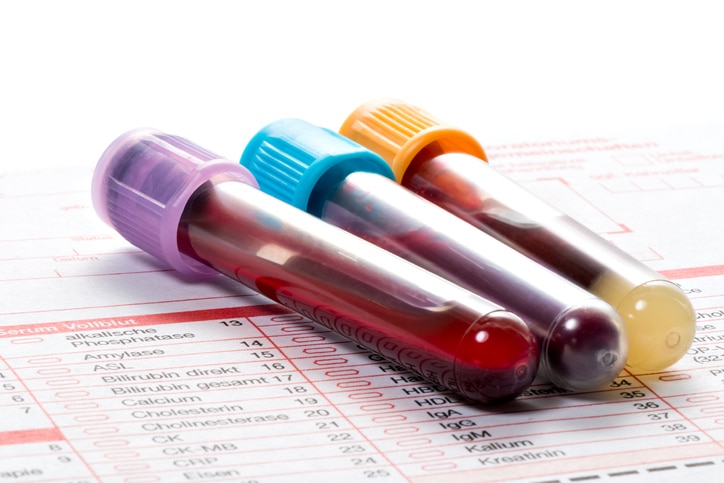
Students in Medix College’s medical lab technician program will learn how to collect blood samples
Those in a Medical Lab Technician Course Should Understand the Importance of Blood’s Regulation
During your medical lab technician training, you’ll learn about how heart activity works, as well as collecting patients’ blood and tissue samples in the labs. It’s worth remembering that the heart’s blood pressure is proportionate to the body’s blood volume, and that blood needs to be regulated enough to achieve homeostasis.
Both blood pressure and volume needs to reach a high enough level so that blood can be delivered to all tissues. This process is known as tissue perfusion. Moreover, blood volume needs to remain at a stable, healthy level, as too little can send the body into hypovolemic shock, while too much can lead to heart failure, aneurysms, coronary artery disease, and hypertension. During your training, you’ll learn more about the functions of the major organ systems and how to assist in identifying common pathologies.
Looking to enrol in a medical lab technician course?
Contact Medix to find out more.
What Students in Medical Lab Tech Courses Should Know About Heart Activity
July 05, 2019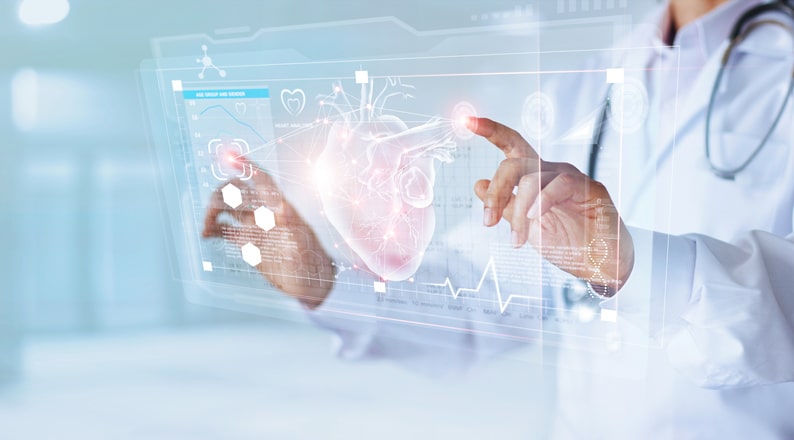
The heart sits behind the breastbone and between the lungs, protected by the rib cage. This organ has been thought of by many people throughout history as the centre of the body, for obvious reasons. Every part of the human body depends on the heart and its function, as it is central to life and nourishment. The heart allows oxygen to reach organs and tissues, carbon dioxide to be removed from the body, and hormones and nutrients to travel where they are needed.
Read on to learn how the heart works, how it is structured, and what makes it so integral.
Graduates of Medical Lab Tech Courses Know About the Heart’s Chambers and Muscle
Graduates of medical lab tech courses know that the four chambers of the heart are the right atrium and left atrium on top, with the right ventricle and left ventricle on the bottom. Blood travels into the heart through the right atrium, down to the right ventricle, through the lungs and back into the left atrium, exiting to the tissues and organs via the left ventricle.
Cardiac muscle is found in the walls of the heart. It functions involuntarily and is made up of striated, or long and cylindrical, cells. This muscle tissue is responsible for the beating of the heart, which pumps blood as cardiac muscles contract in the systole phase. The diastole phase is when the muscles relax and blood is drawn into the heart once again. Cardiac muscle differs from smooth muscle, found in organs, and skeletal muscle, found in the rest of the body.
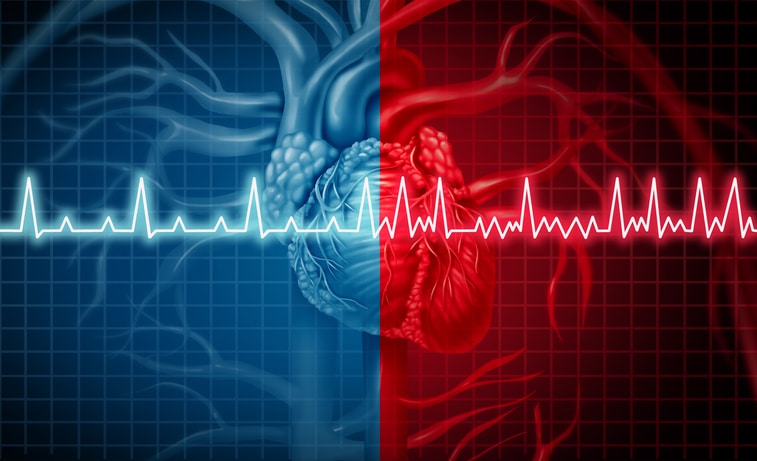
Oxygenated blood exits the heart on the left side, while deoxygenated blood enters on the right
Action Potentials and How They Affect the Heart
An action potential is an electric impulse that produces muscle contraction for movement. With voluntary muscles, a signal comes from the brain telling the muscle to contract, stimulating an action potential in the muscle cell. This occurs with skeletal muscles when they are carrying out movements like walking and typing.
The automaticity of the cardiac muscles, which are involuntary, means that their signal comes from within. The heart receives an electrical current from cells within the walls of the heart called the cardiac conduction system, keeping it beating continuously and automatically.
Circulation and Supplying the Body with Nutrients
The human body has a long network of blood vessels, working to keep oxygen and nutrients supplied to the tissues that need them and re-oxygenate blood that has already delivered vital goods to the rest of the body. Students in a medical lab technician course might know that blood vessels fall into three categories: arteries, veins, and capillaries. The arteries in the body carry blood away from the heart, while veins carry blood to the heart. Capillaries are fine, branching vessels that allow for paths between arterioles and venules.
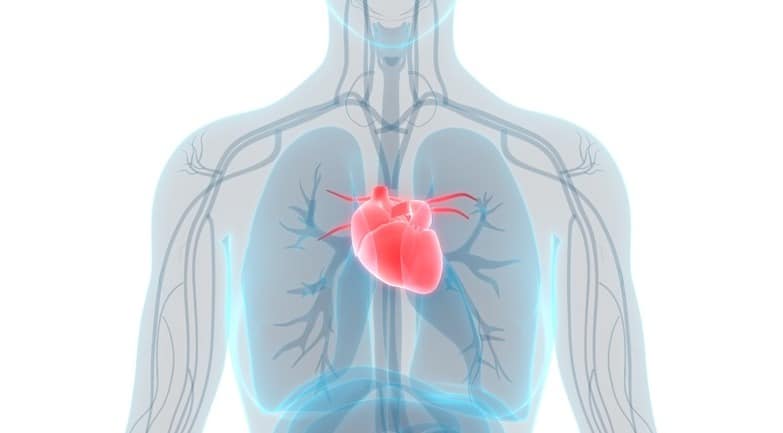
The heart’s purpose is to circulate blood, delivering nutrients and oxygen
First, blood enters the heart through the right atrium, then goes through the right ventricle and into the lungs via a pulmonary artery. Here the blood is oxygenated, then returned to the heart through the pulmonary vein, into the left atrium. This is referred to as the pulmonary circulation system. It then travels through the left ventricle and out to organs and tissues through the systemic circulation system. Once the blood has made its important deliveries, it returns to the right atrium to begin the process all over again.
Are you interested in medical laboratory assistant schools?
Contact Medix for more information.
Why Graduates with Medical Lab Technician Training Are so Important to Healthcare
April 26, 2019
It takes a team of trained professionals to make sure the public gets the healthcare they need. Each healthcare professional is important to this effort, from doctors to personal support workers and more. Medical lab technicians, for example, work under the supervision of a medical laboratory technologist to assist in a variety of laboratory procedures. They help with important tasks such as blood collection, preparing patient samples for testing, and performing electrocardiograms (ECGs), among other duties. Without the services of medical lab technicians, healthcare providers would have a difficult time juggling their own responsibilities and obtaining the test results they need.
If you’re interested in becoming a medical lab technician, read on to find out how this career path helps keep the healthcare sector operating smoothly.
Medical Lab Technicians Help With Sample Collection
Medical lab technicians often come into contact with the public. For example, they interact with patients when it’s time to collect blood or tissue samples. For some patients, this process can be a bit nerve wracking. Fortunately, medical laboratory technicians sit with them through the process to make sure they’re calm and comfortable. They also monitor the sample collection itself using the training they completed in their medical lab technician course.
After the sample is collected, the work of a medical lab technician is far from over. Medical lab technicians make sure that the sample is properly labelled and sent to the right lab for testing. Without medical lab technicians, there wouldn’t be a professional to make sure that samples were collected properly, and that the right sample went to the right lab.
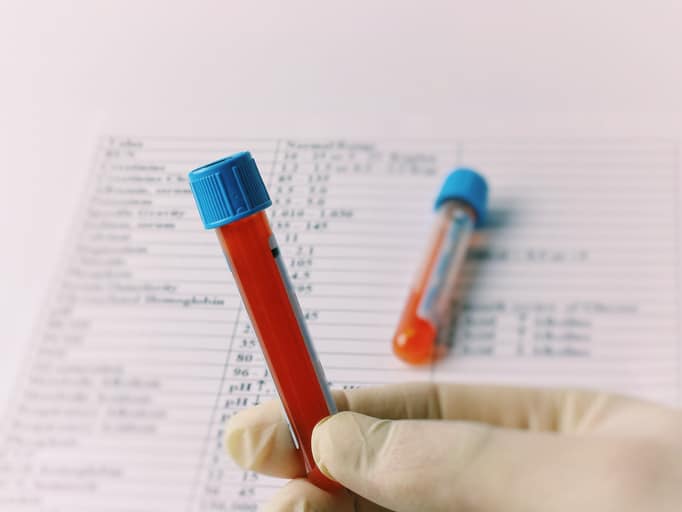
Keeping Equipment Clean Is Important for Grads of Medical Lab Technician School
Medical facilities can be a busy place, which means that reducing the risk of contamination from germs, viruses, and bacteria is important. Medical laboratory technicians help in this regard by making sure that equipment is clean.
In addition to keeping patients safe, keeping equipment clean also helps to ensure that samples are not contaminated. Medical lab technicians often work with sensitive material, from blood and tissue samples to other body fluids. No matter the nature of the sample, protecting its integrity is important because it allows lab staff and doctors to obtain accurate results and make the right diagnosis.
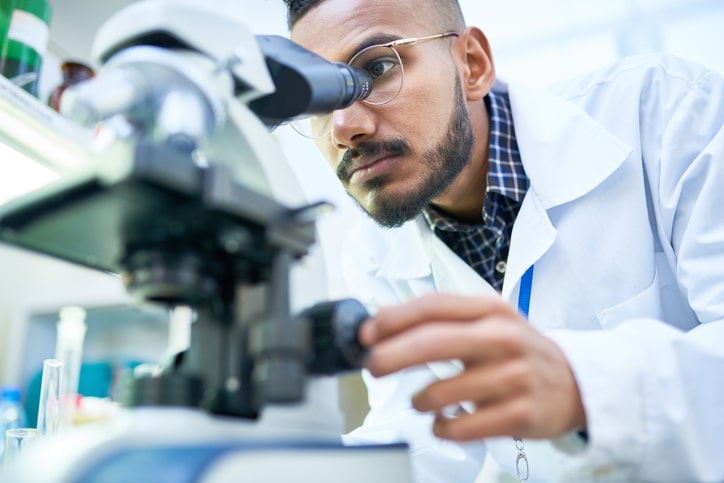
Your medical lab technician training teaches you how to keep the equipment you use clean, which helps ensure the accuracy of medical tests as well as the health and safety of patients. Without careful attention to the cleanliness of the equipment used to draw and process samples, patients may receive the wrong treatment due to cross-contamination, or become infected. This makes medical lab technicians’ careful attention to sterilization and cleanliness an incredibly important task within the healthcare environment.
Are you interested in taking the next step towards a rewarding career in healthcare?
Contact Medix College for more information about our medical lab technician school.
What Students in Medical Lab Technician Training Should Know About Electrocardiograms
February 22, 2019February 22, 2019

Electrocardiograms are one of the most common methods used for determining possible heart problems. An electrocardiogram can do things like check for irregularities in the heartbeat and determine how quickly the heart is beating. Because electrocardiograms are non-invasive, painless, and easy to use, they are widely utilized in the medical industry.
During medical lab technician training, you will learn how to perform electrocardiograms, and there is a very good possibility that electrocardiograms could become a regular part of your career as a medical laboratory technician. If you’re interested in this career path and want to learn a little more, keep reading!
Electrocardiograms Detect Heart Abnormalities Through Electrical Activity
During your medical lab technician training you will learn how to perform electrocardiograms, which help measure a patient’s heart beat. Hearts beat thanks to electrical impulses created by so-called pacemaker cells that are located in the heart. An electrocardiogram is a device that can measure how strong these impulses are and when they occur. During most electrocardiograms 10 electrodes are placed on different areas of the person’s body (usually the chest, but sometimes the limbs as well).
These different electrodes allow the electrocardiogram to gather information about the heartbeat’s different electrical phases. In other words, the electrodes help record a complete picture of the electrical impulses that are helping the heart beat properly.
Electrocardiograms use electrodes to gain a complete picture of a patient’s heart beat
What Electrocardiograms Can Detect
Being able to measure a person’s heartbeat provides doctors and other medical professionals with a wealth of information about a person’s heart health. For instance, an electrocardiogram can reveal an irregular heartbeat or a heartbeat that is too slow or too fast. Depending on the specific data gathered from the electrocardiogram, this information can lead to a diagnosis of heart attack, stroke, enlarged heart chambers or walls, or inadequate blood or oxygen supply.
In many cases, a doctor will have a patient undergo an electrocardiogram if that patient has been experiencing chest pain, heart palpitations, a rapid pulse, or shortness of breath. Electrocardiograms are also often used to detect previous heart attacks and to assess if a medical treatment, like a pacemaker, is working properly. However, an electrocardiogram isn’t only used for people who may have heart problems. Professional athletes also frequently undergo electrocardiograms in order to assess their overall health.
Electrocardiograms can be used to assess the health of professional athletes
Pros with Medical Lab Technician Training Know How Risk-Free Electrocardiograms Are
As graduates of medical lab tech courses know, electrocardiograms are also useful because they are non-invasive and mostly risk-free. Unlike many other diagnostic tools and methods, patients don’t have to do much to prepare for an electrocardiogram. They can still eat what they like and perform normal daily activities. They will, however, need to refrain from caffeine, usually about 4 hours beforehand.
For the electrocardiogram to adhere to the skin, hair will need to be shaved off. This may be done by the patient or by the technician. Another benefit of electrocardiograms is that they are largely risk-free. At most, patients may experience some discomfort when the electrodes are removed from the skin and, in very rare cases, a temporary rash may develop where the electrodes were attached. However, this slight discomfort is fairly mild given the wealth of data that electrocardiograms provide doctors, patients, and medical researchers.
Are you interested in pursuing a new career?
Contact Medix College to learn more about our medical laboratory technician program.
5 Common Mistakes Phlebotomy Technicians Should Avoid after Medical Lab Tech Training
November 30, 2018Medical lab technicians—especially those who work as phlebotomy technicians—often have to draw blood from patients. Blood-draws, in fact, are the most common invasive medical procedure in the world, with billions performed annually. If you decide to pursue a career as a phlebotomy technician, it can be easy to take blood-draws for granted. Mistakes, while rare, can and do happen. Although those mistakes are often minor, they can still cause discomfort for patients and may result in inaccurate results in the lab. To help you become the best phlebotomy technician you can be, we’ve compiled a list of five mistakes you should look out for after your training.
1. Drawing Blood from the Wrong Patient: Rare, but Scary
This mistake is the one you want to avoid the most during your phlebotomy technician career. Drawing blood from the wrong patient is not only upsetting for the patients involved, but it also means that in many cases the blood specimen will be useless for lab tests. In the very worst cases, one patient could end up being treated based on another person’s lab results.
Fortunately, misidentifying patients is extremely rare and easily avoidable. Using standard identification procedures, like checking the patient’s identity document and asking them to spell their name out loud, can help avoid such errors.
2. Labelling Errors: A Small Mistake, but With Big Consequences
Labelling errors can have the same disastrous effects as misidentifying a patient. If a blood specimen is labelled with the wrong patient’s name, then one patient could end up being treated according to inaccurate lab results. This can be dangerous for patients, especially those requiring a blood transfusion. lab worker marking a blood sample
Labelling errors are rare
Many labelling errors are the result of trying to cut corners. For example, some hospitals and clinics use pre-labelled tubes rather than applying labels at the time of collection. While pre-labelled tubes may be more time-efficient, they are a big cause of labelling errors.
3. Medical Lab Techs Should Know How to Use Equipment Properly
Mistakes can also happen that are related to faulty or misused equipment. Some of the most common equipment-related mistakes include leaving the tourniquet on the patient for too long, not sterilizing the equipment properly, and not using the correct needle gauge. In your medical lab tech training, you will learn how to use medical equipment properly so as to avoid such mistakes.
4. Poor Phlebotomy Techniques You Can Avoid with Medical Lab Tech Training
Poor phlebotomy techniques can refer to a range of different problems. Such mistakes include drawing blood from the wrong vein, from an area that is prone to infection, shaking the tube too hard, or not transferring blood using the proper transfer devices. mlta worker with blood sample
Shaking the blood tube too hard can lead to inaccurate test results
These poor phlebotomy techniques are often the result of a lack of hands-on practice. Fortunately, medical laboratory assistant schools that include practical, hands-on training will teach you how to avoid these errors.
5. Avoid Collection Problems as a Phlebotomy Technician
Similarly, problems specific to the collection of blood itself can also occur. These problems may include getting the order of the blood draw wrong, collecting blood too late or too early, or not drawing enough blood so that an accurate lab test can be run. Again, these mistakes are best avoided through proper training and education.
Are you looking to pursue a rewarding career as a medical lab technician or assistant?
Contact Medix College today to see how our medical lab technician training can put you on the path to a fulfilling career.
